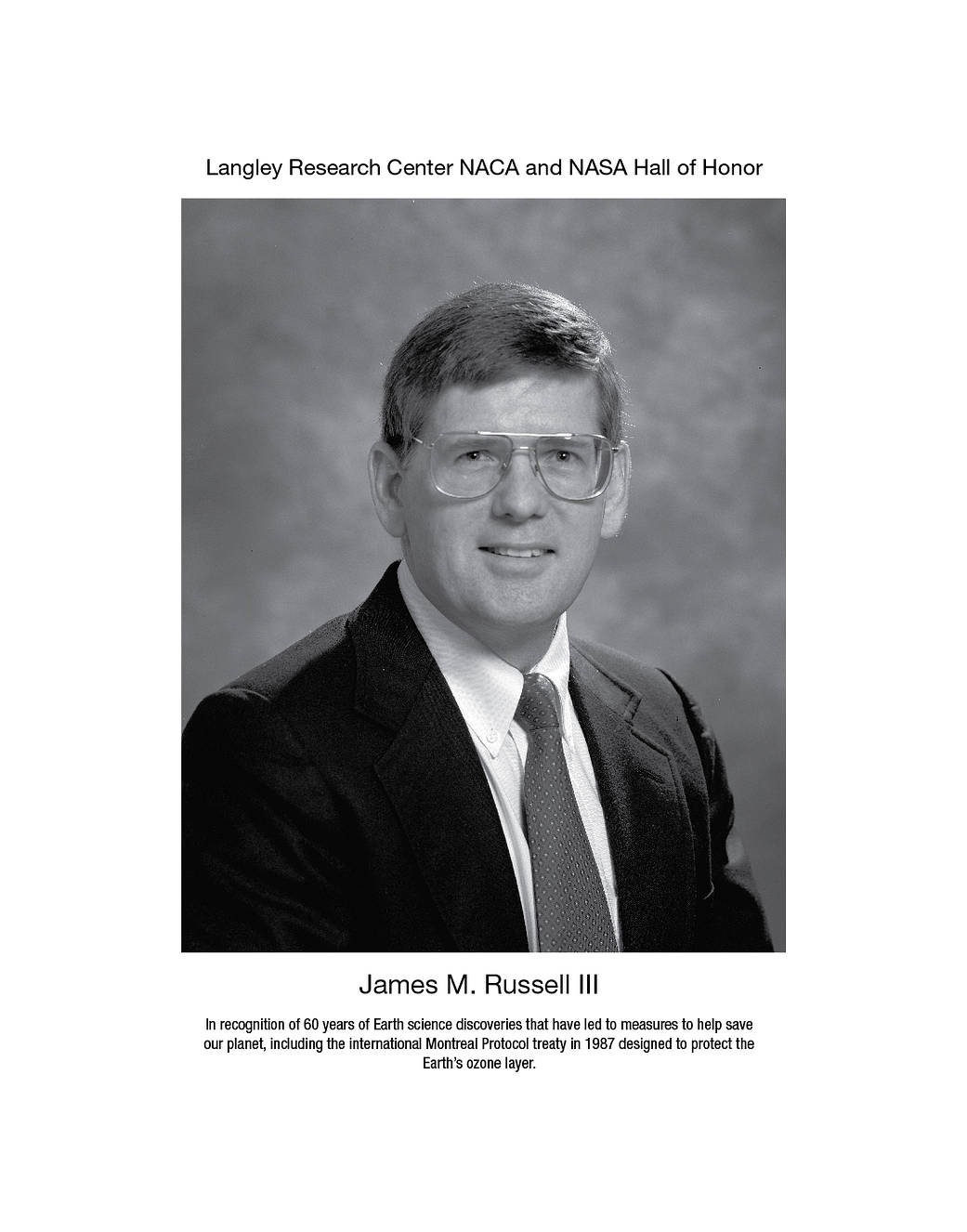James M. Russell III
Dr. James Russell III is an internationally recognized Earth scientist who, over the last 60 years, has made discoveries that have led to measures to help save our planet, including the Montreal Protocol treaty in 1987 designed to protect the Earth’s ozone layer.
Born in Newport News, Virginia, Russell received a bachelor’s degree in electrical engineering from Virginia Tech in 1962. He went on to earn a master’s in electrical engineering from the University of Virginia in 1966 and a doctorate in aeronomy from the University of Michigan in 1970.
Russell began at NASA Langley in 1962 just as NASA started to focus more on environmental and atmospheric sciences. He was part of the early team that built NASA Langley’s expertise in that area and helped Langley win successful proposals for a number of atmospheric space instruments. One of the first was the Limb Infrared Monitor of the Stratosphere experiment that launched on the Nimbus 7 satellite in 1978. Russell proposed and was the co-principal investigator of the instrument that measured nitrogen, oxygen, ozone, water, and temperature in Earth’s upper atmosphere. It was the first of two key atmospheric science satellite instruments led by NASA Langley.
Later Russell proposed the Halogen Occultation Experiment (HALOE) for flight on the Upper Atmospheric Research Satellite that was launched from the Space Shuttle Discovery in 1991. It was an especially important Langley mission because it addressed the effect of chlorofluorocarbons on the ozone layer from space. Langley built and tested the instrument in-house. It operated for 14 and a half years in orbit, providing global-scale results that were used to assess the impact of chlorofluorocarbons and other chlorine compounds on the ozone layer.
Russell published vital evidence, using HALOE data, that chlorofluorocarbons were responsible for ozone destruction, confirming that the hole in the ozone layer was human produced, not a natural phenomenon. The Montreal Protocol treaty banned ozone-depleting chemicals, including chlorofluorocarbons in 1987.
Another Russell-led Earth-orbiting mission, Sounding of the Atmosphere Using Broadband Emission Radiometry, launched in 2001, and is still providing data after 20 years in orbit for more than 2000 peer-reviewed publications. Russell is also principal investigator of the Aeronomy of Ice in the Mesosphere launched in 2002 that is still operating in orbit. Its data so far have resulted in 300 peer-reviewed papers.
Russell left NASA Langley in 1996 to help establish the Center for Atmospheric Sciences at Hampton University. He is the author or coauthor of more than 500 peer-reviewed journal articles in the fields of engineering and atmospheric science. In 2013 he was named an American Geophysical Union fellow for his leadership in developing and operating experiments, for answering questions about the Earth’s atmosphere, and for the sustained impact of his work.

























